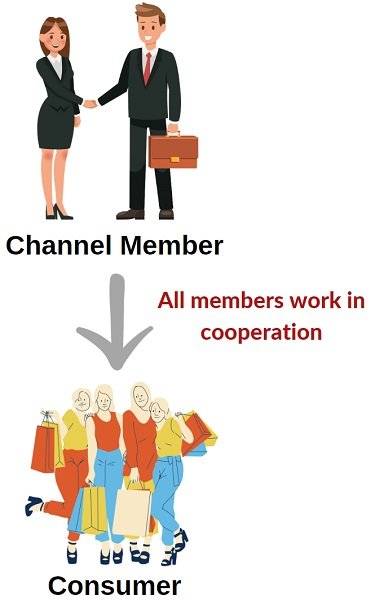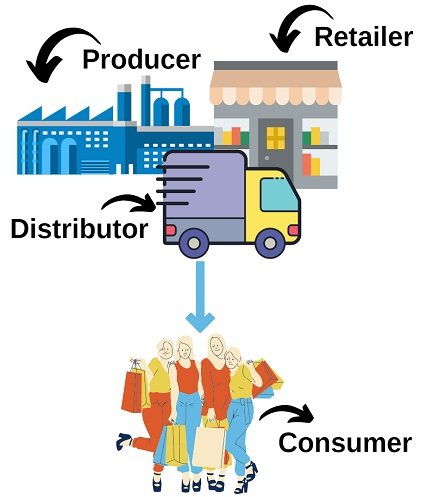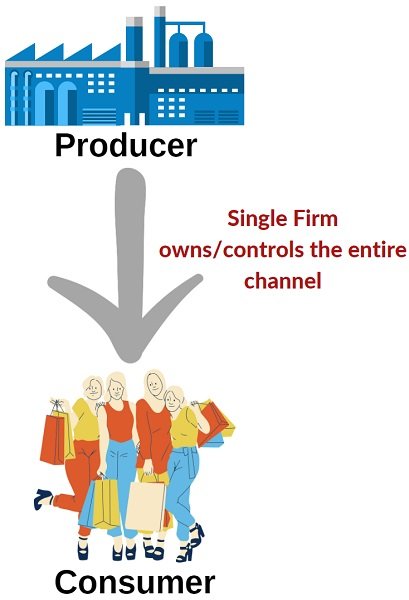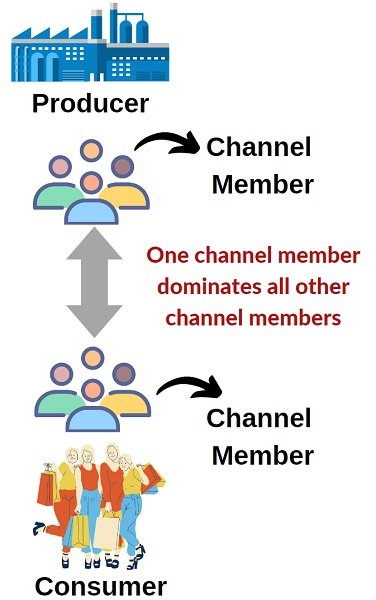Definition: Vertical Marketing System or VMS comprises producers, wholesalers and retailers that work as a combined system. Of the various channel members, one comes out as channel captain and the rest of the members either:
- Agree to follow the captain in sales, delivery and service or
- Franchises them or
- Has sufficient power to convince or force other members to cooperate with them.
So, one channel member owns the other channel members. In short, they are in a pact with each other and exercise a considerable degree of power in that they cooperate with each other. The channel captain attempts to control the behaviour of other channel members. In addition, he also makes efforts to resolve conflicts that arise because of the independent behaviour of channel members.
Moreover, it ensures close coordination and cooperation between various channel members. As a result of this, when all channel partners work together, they generate not only more sales but also a loyal clientele. It helps in achieving an efficient, low-cost distribution that is capable of satisfying the target market customers. Thus, it has given rise to the concept of a planned marketing channel.
The emergence of VMS is to control channel behaviour and manage channel conflict. It helps in achieving economies of scale through:
- Size,
- Bargaining power and
- Elimination of duplicated services
Further, it is a fully integrated system on the vertical level, i.e. right from the manufacturer to the final intermediary.
Types of Vertical Marketing Systems
There are three types of VMS:
Corporate VMS
In this one channel, members own the marketing intermediaries. It combines the successive levels of production and distribution under one ownership. Popularly, we know it as vertical integration. It is possible through forward and backward integration.
In this, the achievement of coordination and channel conflict management is possible by way of regular organizational channels.
Example
- Amul and Asian Paints not only produce the product but also own a number of retail outlets for distribution and sales.
- Kroger and Safeway are also two classic examples of Corporate VMS.
- BATA and TATA also not just produce the products but also sell them through their retail outlets
- Amway is an American cosmetic company which manufactures its own product range and sells these products only through its authorized Amway stores. Here, the ownership of production and distribution is with the company itself.
Administered VMS
In this, the channel organizations stay independent, but one channel member has control over the other business in the supply chain. It coordinates the production and distribution stages depending on the size and power of one channel member.
The dominant member looks after the business health of other participants. Also, it does not make any attempt to remove them or consume the profit of other channel partners. There are instances where the brand equity and market position of the producer are capable of seeking voluntary contributions from the retailers. The contribution can be in the matters of the level of inventory, displays, promotion, shelf space and pricing policy.
Example
- You might have observed that Samsung gets better displays in retail outlets than other brands. This happens because of their size and reputation too.
- Big brands like HUL, ITC, Procter& Gamble, etc., command a high level of cooperation from retailers in terms of display, shelf space, pricing policies, and promotional schemes.
Contractual VMS
Channel organizations operating at different stages of production and distribution come together and work through legal agreements. Basically, it is an arrangement of a group of independent producers and distributors.
In this setting, they incorporate their programs through an agreement to gain synergy and to generate more sales or economies of scale. Here, the contractual agreement plays a crucial role in coordinating the activities and managing conflict. Contractual VMS can take three forms:
- Wholesaler-Sponsored Voluntary Chains
- Retailer Owned Cooperatives
- Franchising
Example
KFC, Pizza Hut, Dominos, and Mcdonald’s are the two most common examples of Contractual VMS.
Advantages of Vertical Marketing System
- In this, the manufacturer and channel members come together to earn profit out of the new arrangement. So, cooperation is the essence of this strategy. Hence, they develop a network and formulate a strategy for the purpose of successfully operating in the market.
- It helps to eliminate the conflicts between channel members completely. It results in a competitive advantage for the manufacturer.
A word from Business Jargons
Above all, a vertical marketing channel is a distribution channel structure wherein a single channel member manages various intermediaries for the purpose of improving distribution efficiency and marketing effectiveness. Further, it also led to channel leadership.




Mr. Ninja says
I love this website
Mutamiswa Tendai says
It is very educative
reebeesswimwear says
Thanks for sharing this it’s really helpful for me.
Angeline says
Wow. Thank you for your very concise notes !